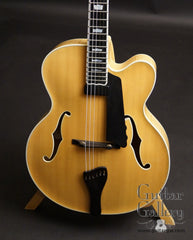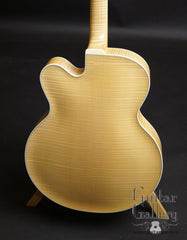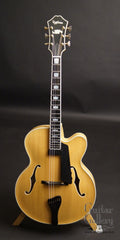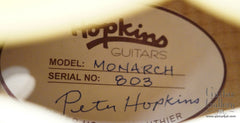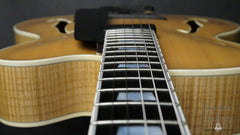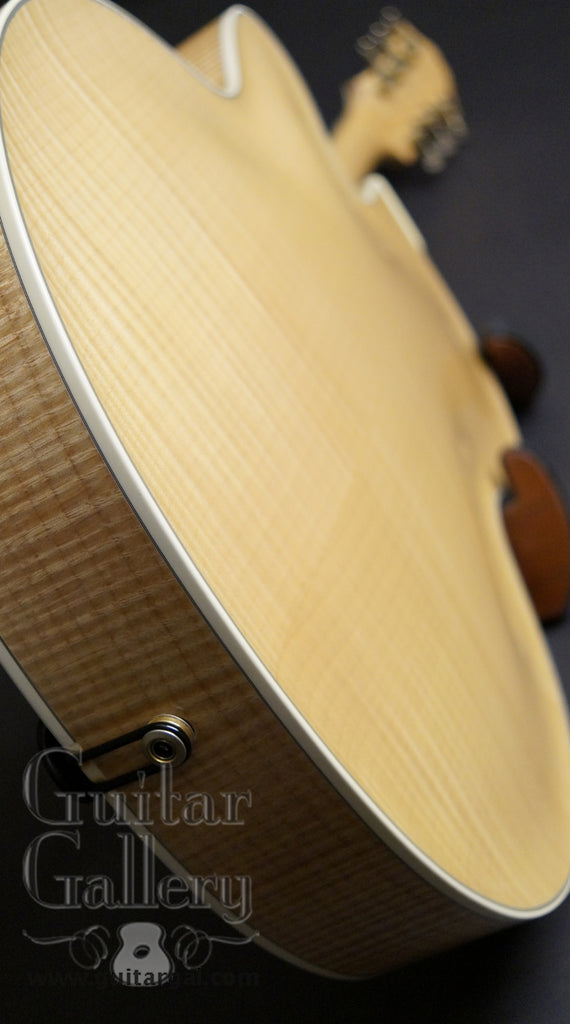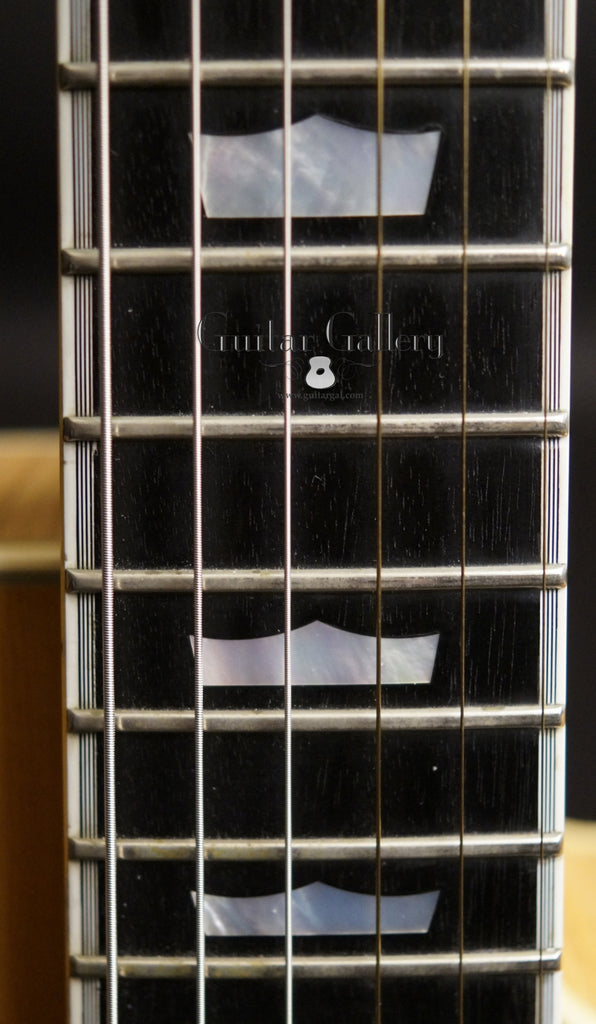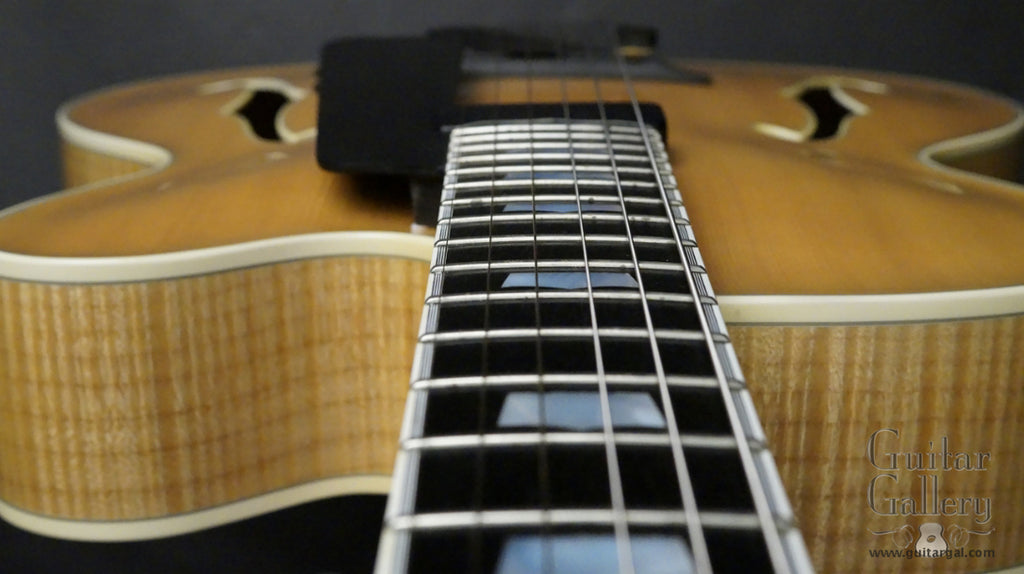HOPKINS Blonde Monarch Archtop
Please Call to Inquire
Hopkins Monarch Archtop (2003)-SOLD
- Big Leaf Maple back & sides.
- Hand-carved Sitka Spruce top.
- Soft cutaway.
- Ebony fretboard with MOP crown inlays.
- Ebony finger rest with 2 discrete volume/tone wheels.
- Ivoroid bindings, including f holes.
- Kent Armstrong floating pickup.
- Ebony headstock faceplate with Monarch crown & scroll inlay.
- Gold Grover Imperial tuning machines.
- Flame maple neck with adjustable truss rod.
- A superbly crafted archtop.
- OHSC included
- Cutaway: Venetian
- Condition: Used, Excellent
- Nut Width: 1 3/4"
- Saddle Spacing: 2 3/16"
- Frets to Body: 14
In Peter Hopkin's Words:
To my mind, the archtop is the most versatile and storied member of the guitar family. In it’s 100 year history, it has been the instrument of choice for artistic innovators from blues to jazz to swing and most anything in between. It is their rich musical history and sheer physical beauty that inspire me to continue the proud tradition of hand building these amazing instruments.
History of the Archtop Guitar
The Archtop Guitar is legendary as an instrument whose versatility spans widely diverse musical styles, embodying the classic lines of the guitar, the cello and the violin, and packing an acoustical punch that is both powerful and refined. Before the invention of the electric pickup, guitar players were always looking for more volume when playing in band or orchestra settings.
In 1890, Orville Gibson, who had been building archtop mandolins, applied this design principle to the guitar. The hollow body design with strings stretched the length of the guitar, elevated over a bridge that was situated at a "sweet spot" on the acoustically responsive curved spruce top, resulted not only in greater volume, but a clarity of tone that distinguishes the sound of an archtop. Body sizes grew from 15 inches to 18 inches in the 1930's, and the acoustic archtop guitar was finally loud enough to step out from the rhythm section and play a role as a solo instrument. Cutaway body designs then emerged as players preferred the upper frets in their solos.
With the advent of electric pickups, the archtop guitar became a versatile instrument, finding a place in widely diverse musical styles including jazz, country, rockabilly and rock and roll.
A Hopkins archtop guitar embodies the essence of the early hand-carved, hollow body design. With the focus on structure, acoustic quality and impeccable finish rather than adornments and ornamentation, Peter Hopkins' instruments are compelling in their visual beauty, and commanding in their performance.
The last 2 sound samples are unplugged~


